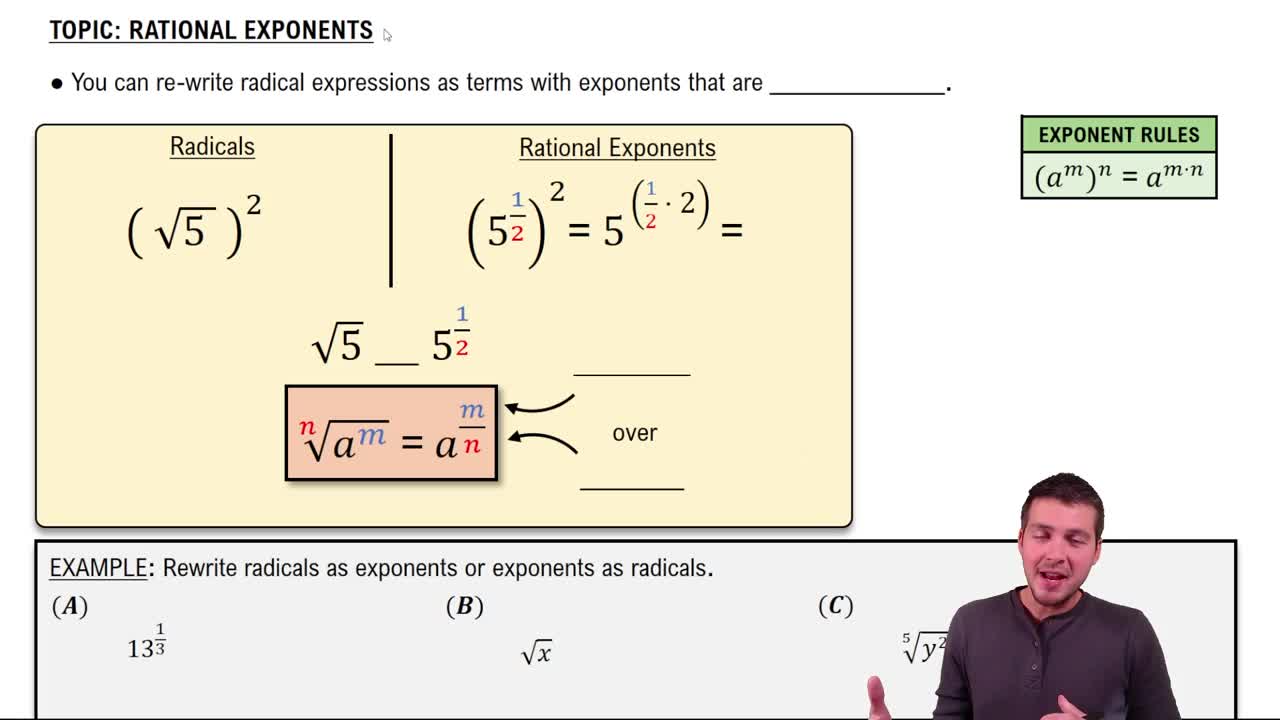Here are the essential concepts you must grasp in order to answer the question correctly.
Square Roots
A square root of a number is a value that, when multiplied by itself, gives the original number. For example, the square root of 25 is 5, since 5 × 5 = 25. In algebra, square roots can be simplified by factoring the number into its prime factors and pairing them, which helps in simplifying expressions involving square roots.
Recommended video:
Imaginary Roots with the Square Root Property
Simplifying Radicals
Simplifying radicals involves rewriting a square root in its simplest form. This is done by identifying perfect squares within the radicand (the number under the square root) and extracting them. For instance, √50 can be simplified to √(25 × 2), which equals 5√2, as 25 is a perfect square.
Recommended video:
Adding & Subtracting Unlike Radicals by Simplifying
Properties of Exponents
Understanding the properties of exponents is crucial when dealing with square roots, as they can be expressed in exponential form. The square root of a number can be represented as that number raised to the power of 1/2. This property aids in manipulating and simplifying expressions involving roots and powers effectively.
Recommended video:



